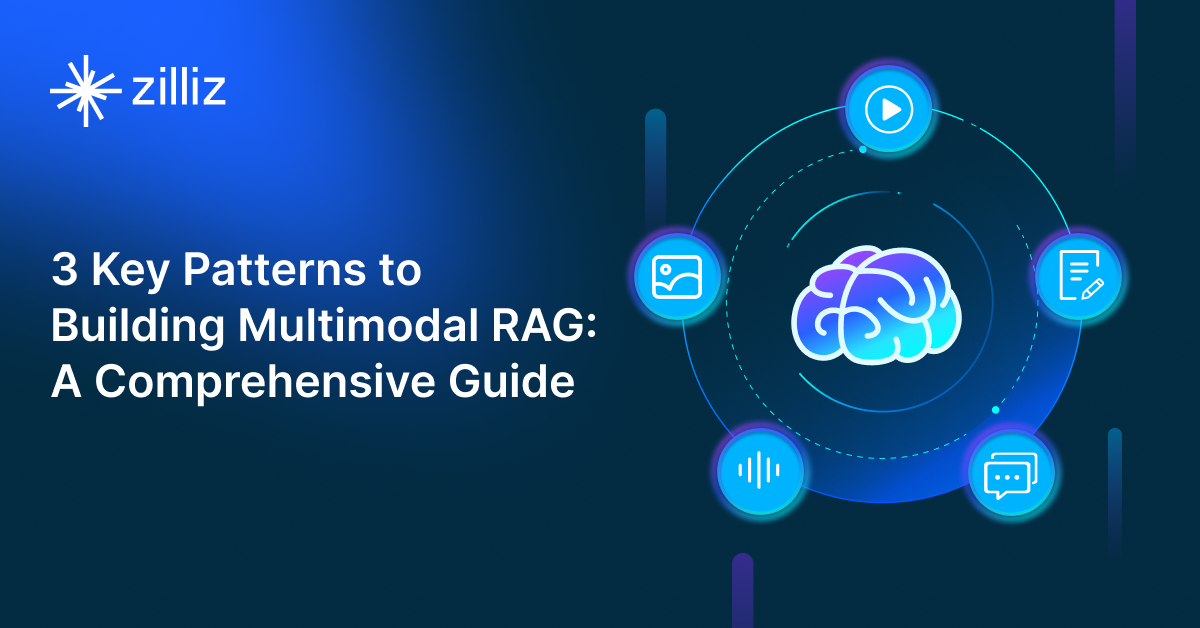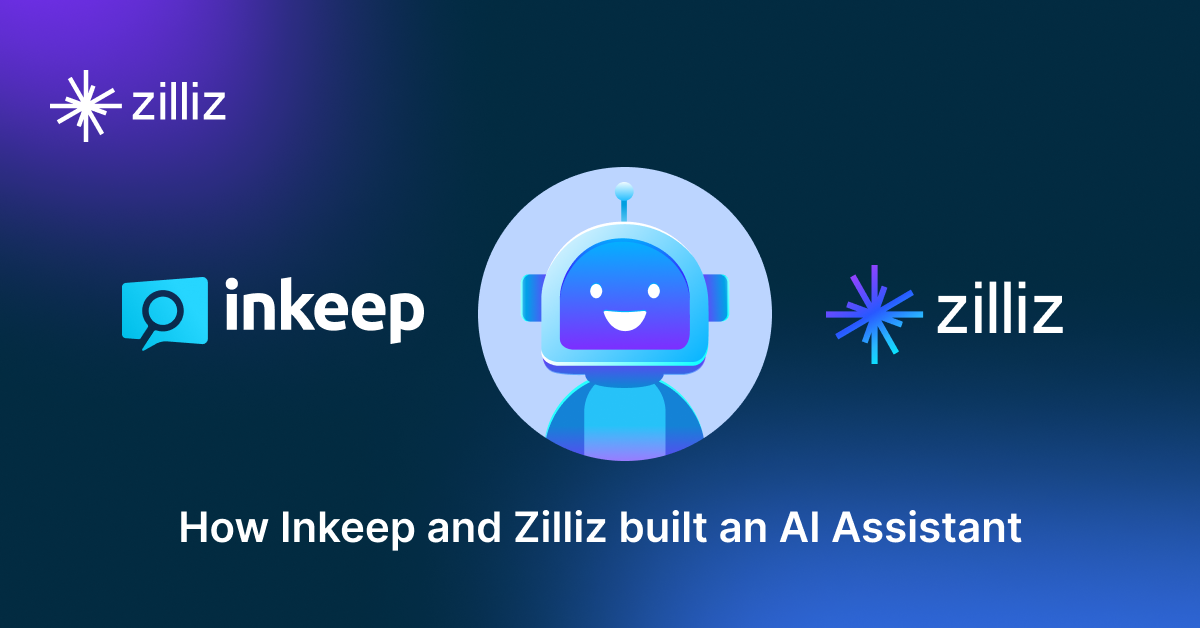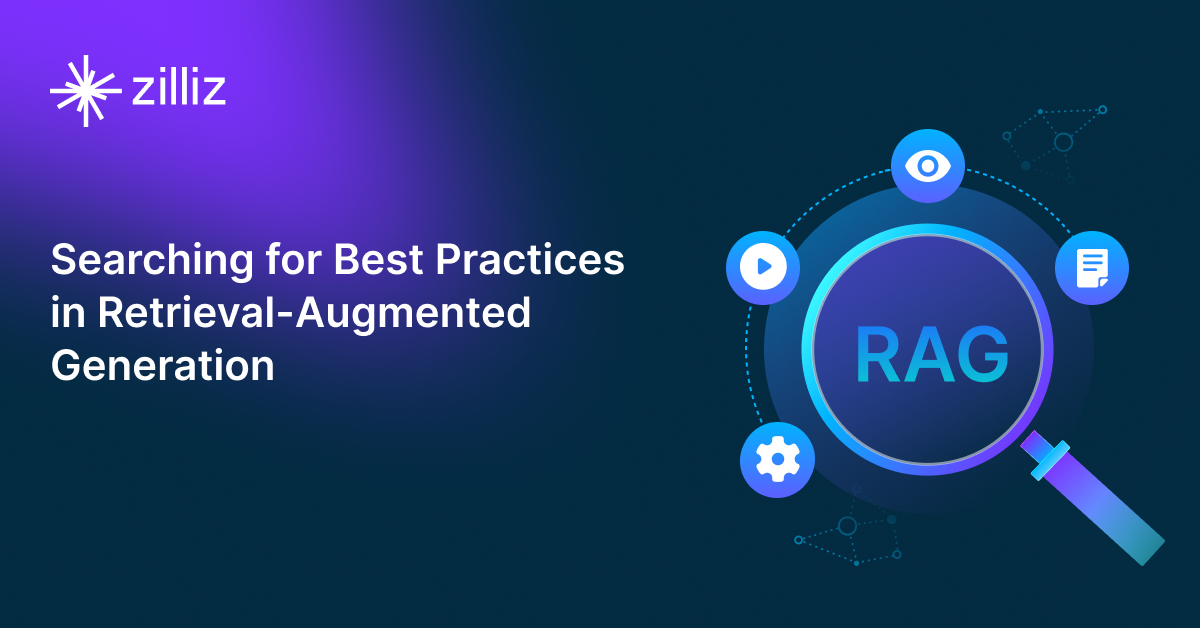Build RAG Chatbot with LangChain, LangChain vector store, Google Vertex AI Gemini 2.0 Flash-Lite, and NVIDIA nv-embed-v1
Introduction to RAG
Retrieval-Augmented Generation (RAG) is a game-changer for GenAI applications, especially in conversational AI. It combines the power of pre-trained large language models (LLMs) like OpenAI’s GPT with external knowledge sources stored in vector databases such as Milvus and Zilliz Cloud, allowing for more accurate, contextually relevant, and up-to-date response generation. A RAG pipeline usually consists of four basic components: a vector database, an embedding model, an LLM, and a framework.
Key Components We'll Use for This RAG Chatbot
This tutorial shows you how to build a simple RAG chatbot in Python using the following components:
- LangChain: An open-source framework that helps you orchestrate the interaction between LLMs, vector stores, embedding models, etc, making it easier to integrate a RAG pipeline.
- LangChain in-memory vector store: an in-memory, ephemeral vector store that stores embeddings in-memory and does an exact, linear search for the most similar embeddings. The default similarity metric is cosine similarity, but can be changed to any of the similarity metrics supported by ml-distance. It is intended for demos and does not yet support ids or deletion. (If you want a much more scalable solution for your apps or even enterprise projects, we recommend using Zilliz Cloud, which is a fully managed vector database service built on the open-source Milvusand offers a free tier supporting up to 1 million vectors.)
- Google Vertex AI Gemini 2.0 Flash-Lite: This model streamlines AI deployment with an emphasis on low-latency and cost-efficient solutions. It excels in real-time applications like chatbots and interactive tools, combining high performance with seamless integration across various frameworks. Ideal for businesses looking to enhance user engagement without compromising efficiency.
- NVIDIA nv-embed-v1: This model specializes in generating high-quality embeddings for various applications, such as image and text processing. Its strength lies in efficiently capturing semantic similarities and contextual information. Ideal for tasks like semantic search, recommendation systems, and natural language understanding, it facilitates advanced AI solutions across diverse industries.
By the end of this tutorial, you’ll have a functional chatbot capable of answering questions based on a custom knowledge base.
Note: Since we may use proprietary models in our tutorials, make sure you have the required API key beforehand.
Step 1: Install and Set Up LangChain
%pip install --quiet --upgrade langchain-text-splitters langchain-community langgraph
Step 2: Install and Set Up Google Vertex AI Gemini 2.0 Flash-Lite
pip install -qU "langchain[google-vertexai]"
# Ensure your VertexAI credentials are configured
from langchain.chat_models import init_chat_model
llm = init_chat_model("gemini-1.5-flash", model_provider="google_vertexai")
Step 3: Install and Set Up NVIDIA nv-embed-v1
pip install -qU langchain-nvidia-ai-endpoints
import getpass
import os
if not os.environ.get("NVIDIA_API_KEY"):
os.environ["NVIDIA_API_KEY"] = getpass.getpass("Enter API key for NVIDIA: ")
from langchain_nvidia_ai_endpoints import NVIDIAEmbeddings
embeddings = NVIDIAEmbeddings(model="nvidia/nv-embed-v1")
Step 4: Install and Set Up LangChain vector store
pip install -qU langchain-core
from langchain_core.vectorstores import InMemoryVectorStore
vector_store = InMemoryVectorStore(embeddings)
Step 5: Build a RAG Chatbot
Now that you’ve set up all components, let’s start to build a simple chatbot. We’ll use the Milvus introduction doc as a private knowledge base. You can replace it with your own dataset to customize your RAG chatbot.
import bs4
from langchain import hub
from langchain_community.document_loaders import WebBaseLoader
from langchain_core.documents import Document
from langchain_text_splitters import RecursiveCharacterTextSplitter
from langgraph.graph import START, StateGraph
from typing_extensions import List, TypedDict
# Load and chunk contents of the blog
loader = WebBaseLoader(
web_paths=("https://milvus.io/docs/overview.md",),
bs_kwargs=dict(
parse_only=bs4.SoupStrainer(
class_=("doc-style doc-post-content")
)
),
)
docs = loader.load()
text_splitter = RecursiveCharacterTextSplitter(chunk_size=1000, chunk_overlap=200)
all_splits = text_splitter.split_documents(docs)
# Index chunks
_ = vector_store.add_documents(documents=all_splits)
# Define prompt for question-answering
prompt = hub.pull("rlm/rag-prompt")
# Define state for application
class State(TypedDict):
question: str
context: List[Document]
answer: str
# Define application steps
def retrieve(state: State):
retrieved_docs = vector_store.similarity_search(state["question"])
return {"context": retrieved_docs}
def generate(state: State):
docs_content = "\n\n".join(doc.page_content for doc in state["context"])
messages = prompt.invoke({"question": state["question"], "context": docs_content})
response = llm.invoke(messages)
return {"answer": response.content}
# Compile application and test
graph_builder = StateGraph(State).add_sequence([retrieve, generate])
graph_builder.add_edge(START, "retrieve")
graph = graph_builder.compile()
Test the Chatbot
Yeah! You've built your own chatbot. Let's ask the chatbot a question.
response = graph.invoke({"question": "What data types does Milvus support?"})
print(response["answer"])
Example Output
Milvus supports various data types including sparse vectors, binary vectors, JSON, and arrays. Additionally, it handles common numerical and character types, making it versatile for different data modeling needs. This allows users to manage unstructured or multi-modal data efficiently.
Optimization Tips
As you build your RAG system, optimization is key to ensuring peak performance and efficiency. While setting up the components is an essential first step, fine-tuning each one will help you create a solution that works even better and scales seamlessly. In this section, we’ll share some practical tips for optimizing all these components, giving you the edge to build smarter, faster, and more responsive RAG applications.
LangChain optimization tips
To optimize LangChain, focus on minimizing redundant operations in your workflow by structuring your chains and agents efficiently. Use caching to avoid repeated computations, speeding up your system, and experiment with modular design to ensure that components like models or databases can be easily swapped out. This will provide both flexibility and efficiency, allowing you to quickly scale your system without unnecessary delays or complications.
LangChain in-memory vector store optimization tips
LangChain in-memory vector store is just an ephemeral vector store that stores embeddings in-memory and does an exact, linear search for the most similar embeddings. It has very limited features and is only intended for demos. If you plan to build a functional or even production-level solution, we recommend using Zilliz Cloud, which is a fully managed vector database service built on the open-source Milvus and offers a free tier supporting up to 1 million vectors.)
Google Vertex AI Gemini 2.0 Flash-Lite optimization tips
Gemini 2.0 Flash-Lite is a lightweight, fast-response model suited for cost-efficient RAG applications. Improve retrieval by using high-precision embeddings to minimize irrelevant context. Structure prompts efficiently, keeping them short and well-organized. Adjust temperature (0.1–0.2) for accuracy, tuning top-p for output variety when needed. Cache frequent queries to reduce API usage and improve performance. Use Google’s auto-scaling infrastructure to handle demand spikes seamlessly. If deploying multiple models, utilize Flash-Lite for initial filtering and summarization while reserving larger models for in-depth reasoning.
NVIDIA nv-embed-v1 Optimization Tips
To optimize the NVIDIA nv-embed-v1 within a Retrieval-Augmented Generation (RAG) setup, ensure you fine-tune your models with domain-specific data to improve relevance and accuracy. Utilize mixed precision training to speed up training times and reduce memory usage. Implement efficient batching techniques to handle larger datasets, maximizing throughput. Leverage NVIDIA’s TensorRT for inference optimization, enabling faster response times during retrieval. Lastly, monitor GPU utilization and experiment with various hyperparameters, such as learning rates and dropout rates, for optimal performance tailored to your application needs.
By implementing these tips across your components, you'll be able to enhance the performance and functionality of your RAG system, ensuring it’s optimized for both speed and accuracy. Keep testing, iterating, and refining your setup to stay ahead in the ever-evolving world of AI development.
RAG Cost Calculator: A Free Tool to Calculate Your Cost in Seconds
Estimating the cost of a Retrieval-Augmented Generation (RAG) pipeline involves analyzing expenses across vector storage, compute resources, and API usage. Key cost drivers include vector database queries, embedding generation, and LLM inference.
RAG Cost Calculator is a free tool that quickly estimates the cost of building a RAG pipeline, including chunking, embedding, vector storage/search, and LLM generation. It also helps you identify cost-saving opportunities and achieve up to 10x cost reduction on vector databases with the serverless option.
 Calculate your RAG cost
Calculate your RAG cost
What Have You Learned?
By diving into this tutorial, you’ve unlocked the magic of building a RAG system from the ground up! You learned how LangChain acts as the glue that ties everything together, elegantly orchestrating the flow between your data, embeddings, and the language model. By leveraging LangChain’s built-in vector store, you saw firsthand how to store and retrieve information efficiently, creating a dynamic knowledge base that powers real-time, context-aware responses. Then came the powerhouse duo: Google Vertex AI Gemini 2.0 Flash-Lite, with its lightning-fast inference and cost-effective design, and NVIDIA’s nv-embed-v1, which turbocharges your embeddings with precision and speed. Together, they transform raw data into actionable insights, enabling your system to answer complex questions with human-like fluency. You even picked up pro tips for optimizing performance, like balancing speed and accuracy when chunking data and using parallel processing to scale gracefully—plus, that free RAG cost calculator is your new secret weapon for budgeting smarter and iterating faster.
Now you’re equipped to build intelligent applications that don’t just answer questions but understand context, adapt to users, and evolve over time. Imagine chatbots that feel like trusted advisors, research tools that surface insights in seconds, or creative assistants that brainstorm alongside you—this is the future you’re ready to shape. So go ahead! Experiment with different models, tweak your retrieval strategies, and let your curiosity guide you. The tools are in your hands, and the possibilities are endless. Build something bold, optimize fearlessly, and watch your ideas come to life. The world of AI-powered innovation is waiting—and you’ve just leveled up your skills to lead the charge. Let’s get building! 🚀
Further Resources
🌟 In addition to this RAG tutorial, unleash your full potential with these incredible resources to level up your RAG skills.
- How to Build a Multimodal RAG | Documentation
- How to Enhance the Performance of Your RAG Pipeline
- Graph RAG with Milvus | Documentation
- How to Evaluate RAG Applications - Zilliz Learn
- Generative AI Resource Hub | Zilliz
We'd Love to Hear What You Think!
We’d love to hear your thoughts! 🌟 Leave your questions or comments below or join our vibrant Milvus Discord community to share your experiences, ask questions, or connect with thousands of AI enthusiasts. Your journey matters to us!
If you like this tutorial, show your support by giving our Milvus GitHub repo a star ⭐—it means the world to us and inspires us to keep creating! 💖
- Introduction to RAG
- Key Components We'll Use for This RAG Chatbot
- Step 1: Install and Set Up LangChain
- Step 2: Install and Set Up Google Vertex AI Gemini 2.0 Flash-Lite
- Step 3: Install and Set Up NVIDIA nv-embed-v1
- Step 4: Install and Set Up LangChain vector store
- Step 5: Build a RAG Chatbot
- Optimization Tips
- RAG Cost Calculator: A Free Tool to Calculate Your Cost in Seconds
- What Have You Learned?
- Further Resources
- We'd Love to Hear What You Think!
Content
Vector Database at Scale
Zilliz Cloud is a fully-managed vector database built for scale, perfect for your RAG apps.
Try Zilliz Cloud for Free


